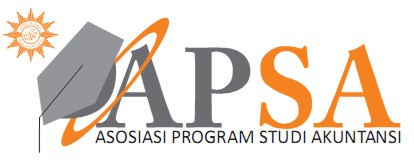Pengaruh Resiko Likuiditas Terhadap Profitabilitas Bank Konvensional di Indonesia
Keywords:
Risk Management, Liquidity Risk, Deposits, Cash Reserves, Non Performing Loan, ProfitabilityAbstract
The purpose of this study is to acknowledge the relationship between conventional bank’s liquidity risk towards profitability, which companies are listed in Indonesian Stock Exchange between 2008-2011. The independent variables in this study are deposits, cash reserves, liquidity gap, and non performing loan, whereas dependent variable is profitability. The sampling method being used is purposive sampling with total number of 30 banks and the data analysis method being used is linear regression. The result of the study shows that there is positive relationship between deposits and cash reserves towards profitability, and negative relationship between liquidity gap and non performing loan towards profitability. This result indicates that to achieve maximum profitability, a firm has to manage it’s cash reserves and cash flows, whereas investor has to pay attention of total asset – total liabililties ratio and NPL ratio.
References
Karim, A. M. A., S. G. Chan dan S. Hassan. 2010. Bank Efficiency and Non performing loan: Evidence from Malaysia and Singapore. Prague Economic Papers, 2, 118-132.
Akhtar, S. 2007. Pakistan Changing Risk Management Paradigm Perspective of The Regulator, 38, 1-5.
Al Janabi, M. A. M. 2009. Asset Market Liquidity Risk Management: AGeneralized Theoretical Modeling Approach for Trading and Fund Management Portfolios. Munich Personal RePEc Archive, 19498, 3-7.
Almilia, L. S., dan W. Herdiningtyas. 2007. Analisa Rasio CAMEL Terhadap Prediksi Kondisi Bermasalah Pada Lembaga Perbankan Perioda 2000–2002. Jurnal Akuntansi dan Keuangan, 7 (2), 13-17.
Arif, A., dan A. N. Anees. 2012. Liquidity Risk And Performance Of Banking System. Journal of Financial Regulation and Compliance, 20, 182-195.
Bates, T. W., K. M. Kahle dan R.Stulz. 2009. Why Do U.S. Firms Hold So Much More Cash Than They Used To?. Journal of Finance, 64, 1985-2021.
Brown, C., Y. Chen., dan C. Shekhar. 2011. Institutional Ownership and Firm Cash Holdings. Financial Research Network, 10, 9-12.
Brunnermeier, M., dan L. H. Pedersen. 2009. Market Liquidity and Funding Liquidity. Oxford University Press, 22, 1-38.
Chaplin, G., A. Emblow., dan I. Michael. 2000. Banking System Liquidity: Developments And Issues. Financial Stability Review, 4, 93-112.
Charumathi, B. 2008. Asset Liability Management in Indian Banking Industry – With Special Reference to Interest Rate Risk Management in ICICI Bank. 1 (2), 1-5.
Culp, C. L. 2008. The Risk Management Process–Business Strategy and Tactics. John Wiley & Sons.
Djiwandono, J.S. (2012), ”Skandal LIBOR”, Kompas, 02-08-2012
Duchin, R. 2010. Cash Holdings and Corporate Diversification. Journal of Finance, 65, 955-992.
Duffie, D., N. Garleanu., dan L. H. Pedersen. 2005. Over-The-Counter Markets. Econometrica, 73 (6), 1815-1847.
Falconer, B. 2001. Structural Liquidity: The Worry Beneath the Surface. Balance Sheet, 9 (3),13-19.
Gitman, L. J. dan C. J. Zutter, 2012. Principle of Managerial Finance (13th ed.). Boston: Pearson Education Inc.
Goodhart, C. 2008. Liquidity Risk Manage-ment. Financial Stability Review, 11 (6), 7-12.
Gul, S., F. Irshad., K. Zaman. 2011. Factors Affecting Bank Profitability in Pakistan. The Romanian Economic Journal, 39, 61-82.
Hanafi, M. M., dan A. Halim. 2009. Analisa Laporan Keuangan. UPP STIM YKPN.
Haneef, S., T. Riaz., M. Ramzan., M. A. Rana., H. M. Ishaq., dan Y. Karim. 2012. Impact of Risk Management on Non performing loan and Profitability of Banking Sector of Pakistan. International Journal of Business and Social Science, 3 (7), 308-314.
Harford, J., W. Mikkelson., dan M. M. Partch. 2003. The Effect of Cash Reserves on Corporate Investment and Performance in Industry Downturns. 32, pp.1-18.
Holmstrom, B., dan J. Tirole. 2000. Liquidity And Risk Management. Journal of Money Credit and Banking, 32 (3), 296-317.
Jenkinson, N. 2008. Strengthening Regimes For Controlling Liquidity Risk. Euro Money Conference on Liquidity and Funding Risk Management, 6, 9-14.
Kuncoro, M., dan Suharjono. 2008. Manajemen Perbankan: Teori dan Aplikasi. Yogyakarta: BPFE.
Kuswadi. 2008. Memahami Rasio-Rasio Keuangan Bagi Orang Awam. Elex Media Komputindo.
Mahmud dan Rukmana. 2010. Bank Syariah: Teori, Kebijakan dan Studi Empiris di Indonesia. Erlangga.
Mikkelson, W. H., dan M. M. Partch. 2003. Do Persistent Large Cash Reserves Hinder Performance?. Journal of Quantitative and Financial Analysis, 38 (2), 275-294.
Myers, S.C. dan N. S. Majluf. 1984. Corporate Financing and Investment Decisions when Firms Have Information That Investors Do Not Have. Journal of Financial Economics, 13, 187-221.
Nguyen, J. 2011. Market Concentration and other Determinants of Bank Profitability: Evidence from Panel Data. International Research Journal of Finance and Economics, 70, 8-17.
Opler, T., L. Pinkowitz., R. Stulz., dan R. Williamson. 1999. The Determinants and Implications of Corporate Cash Holdings. Journal of Financial Economics, 52, 3-46.
Pfrimmer, E. 2010. Liquidity and Trust in Financial Markets. 25, 2-5.
Rivai, V., A. P. Veithzal dan F. N. Idroes. 2009. Bank and Financial Institution Management-Conventional and Sharia System. PT. Raja Grafindo Persada.
Rosch, C. G. 2012. Market Liquidity: An Empirical Analysis of The Impact of The Financial Crisis, Ownership Structures and Insider Trading. Doctoral Dissertation, Technischen Universitat Munchen.
Sartono, A. 2008. Manajemen Keuangan Teori dan Aplikasi. Yogyakarta: BPFE.
Sholihin, A. I. 2010. Buku Pintar Ekonomi Syariah. PT. Gramedia Pustaka Utama.
Siamat, D. 2009. Manajemen Lembaga Keuangan: Kebijakan Moneter dan Perbankan (5th ed.). Jakarta: Lembaga Penerbit Fakultas Ekonomi Universitas Indonesia.
Sinungan, M. 2009. Manajemen Dana Bank (5th ed.). Jakarta: Penerbit Kencana.
Downloads
Published
How to Cite
Issue
Section
License
License
 Journal of Accounting and Investment is licensed under Creative Commons Attribution Attribution-NonCommercial-NoDerivatives 4.0 International License.
Journal of Accounting and Investment is licensed under Creative Commons Attribution Attribution-NonCommercial-NoDerivatives 4.0 International License.




